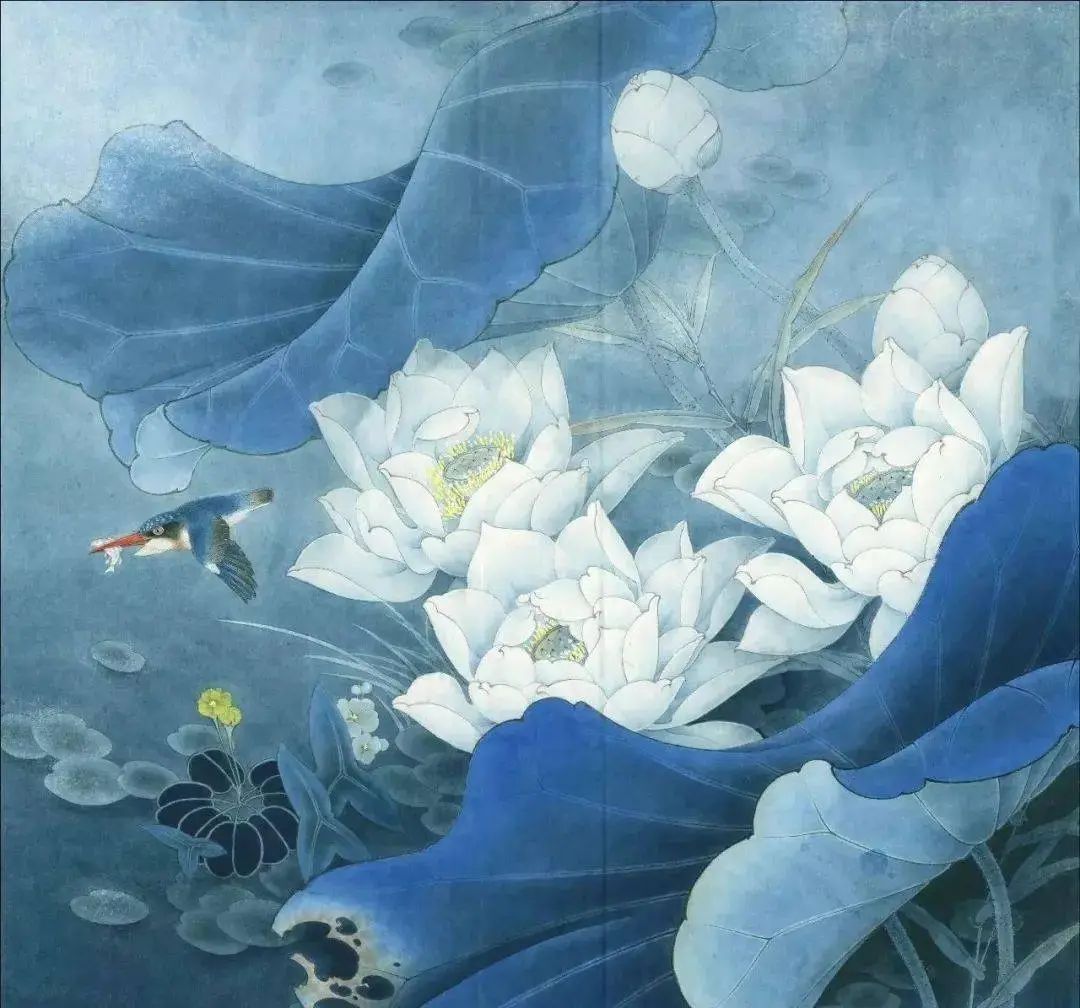Detailed painting steps of Five-colored lotus in Gongbi style!
1、Light ink outlines the flower head, thick ink outlines the main leaves, medium ink outlines the reverse leaves, branches, water plants, etc. The outer contour lines of the leaf edge should be thicker, emphasizing the large volume relationship. Whenever possible, use a long tipped pen for outlining. This type of white drawing, which is mainly based on long lines, can better reflect the lively and graceful charm with a long tipped pen. The close-up lines are slightly thicker, while the distant lines are slightly thinner. The steps for drawing a kingfisher are outlined below.
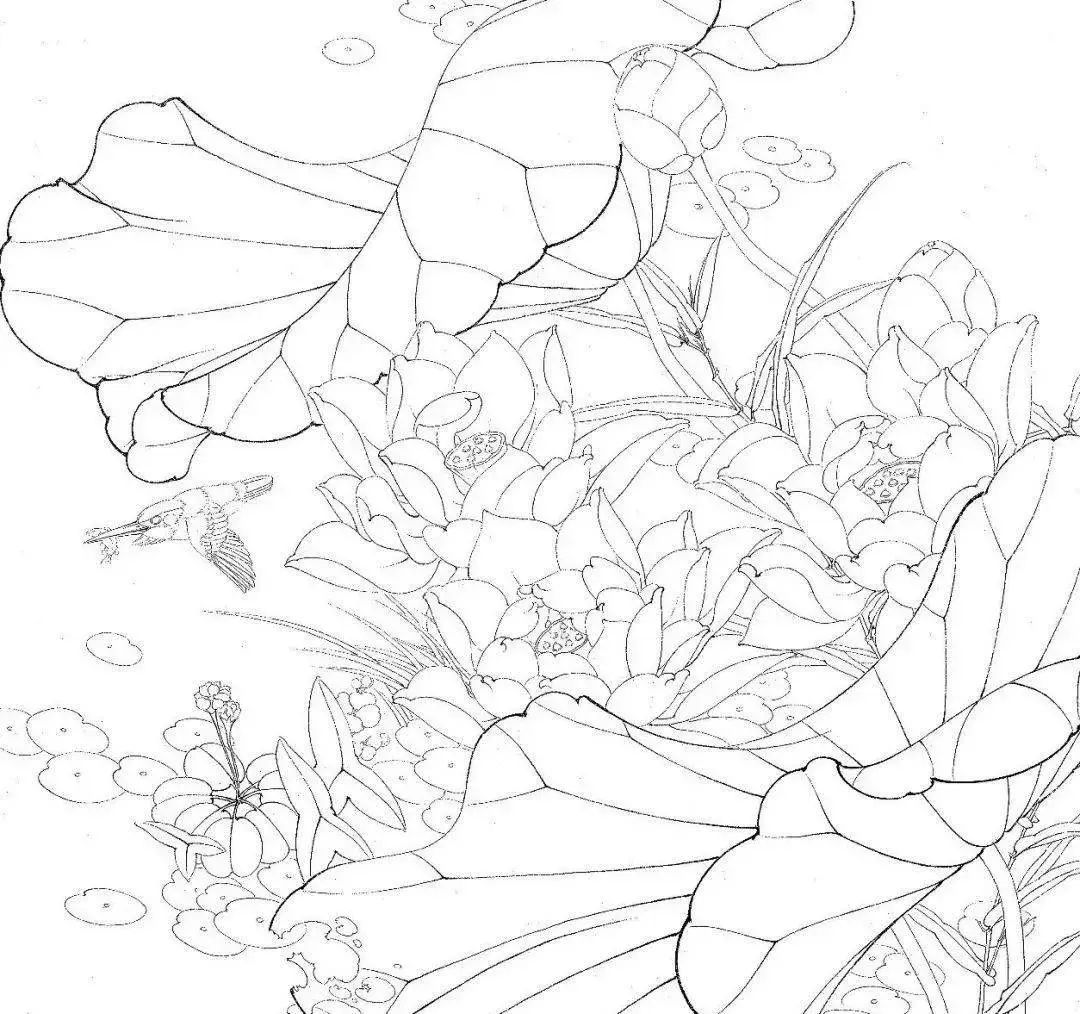
2、After applying white powder to the flower head, mix a small amount of phthalocyanine blue with three green dyes for the first time. For the remaining parts (leaves, water plants, background, etc.), apply a layer of light blue (phthalocyanine blue+three green) base color first. Subsequently, the main leaves were coated with a medium concentration of blue (phthalocyanine blue+tricyanin) and then dyed with slightly blue-green anthocyanins for the first time, leaving water lines on both sides of the leaf veins.
After applying light three green to the anti leaf flat, dye it with blue (phthalocyanine blue+three green) for the first time, drawing from the root to the edge, and dye it about 3 centimeters away from the outer contour. The front of aquatic plants, lotus stems, and floating duckweed are dyed in dark blue (floral green+ink). Water golden lotus leaves are painted flat with light ink, and flower heads are painted flat with pink yellow (rattan yellow+white). The painting technique for the mushroom leaves is the same as the front lotus leaf, with the mushroom flower head painted white flat.
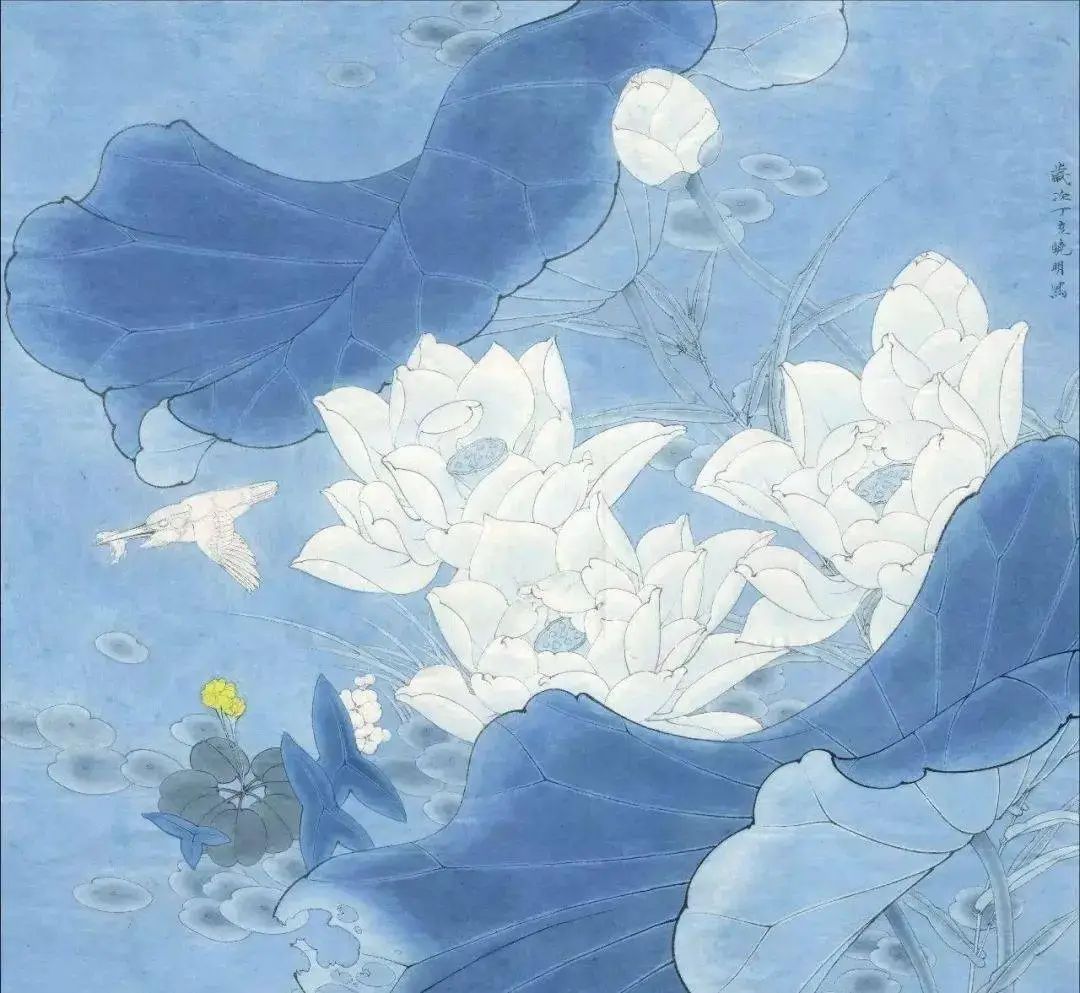
3、Continue to stain the roots with flower head flat three green and phthalocyanine blue two or three times, and use flower green to stain the lotus pods. Continue to dye the main leaves with indigo for about three more times. Reverse leaves, lotus stems, and floating duckweed are further dyed in dark blue (floral green+ink).
The overall background should be dyed with indigo from bottom to top, darker at the bottom and lighter at the top. It should be dyed about 7-8 times, and the transition color level must be natural. For the lowest dark color, it is recommended to use dark cyan (indigo+ink) for dyeing. The leaves of water lily are coated with dark indigo and a small amount of phthalocyanine blue, leaving water lines around for decorative effect. The flower heads of water lily are dyed in magenta (rouge, vermilion, and a little ink).
The mushroom flowers are dyed with light yellow green (rattan yellow+phthalocyanine blue+a little triple green). The reverse leaves of aquatic plants are dyed with light green, leaving water lines at the edges. The main leaves are dyed with dark green, leaving water lines at the main veins. Draw a slight projection below the duckweed.
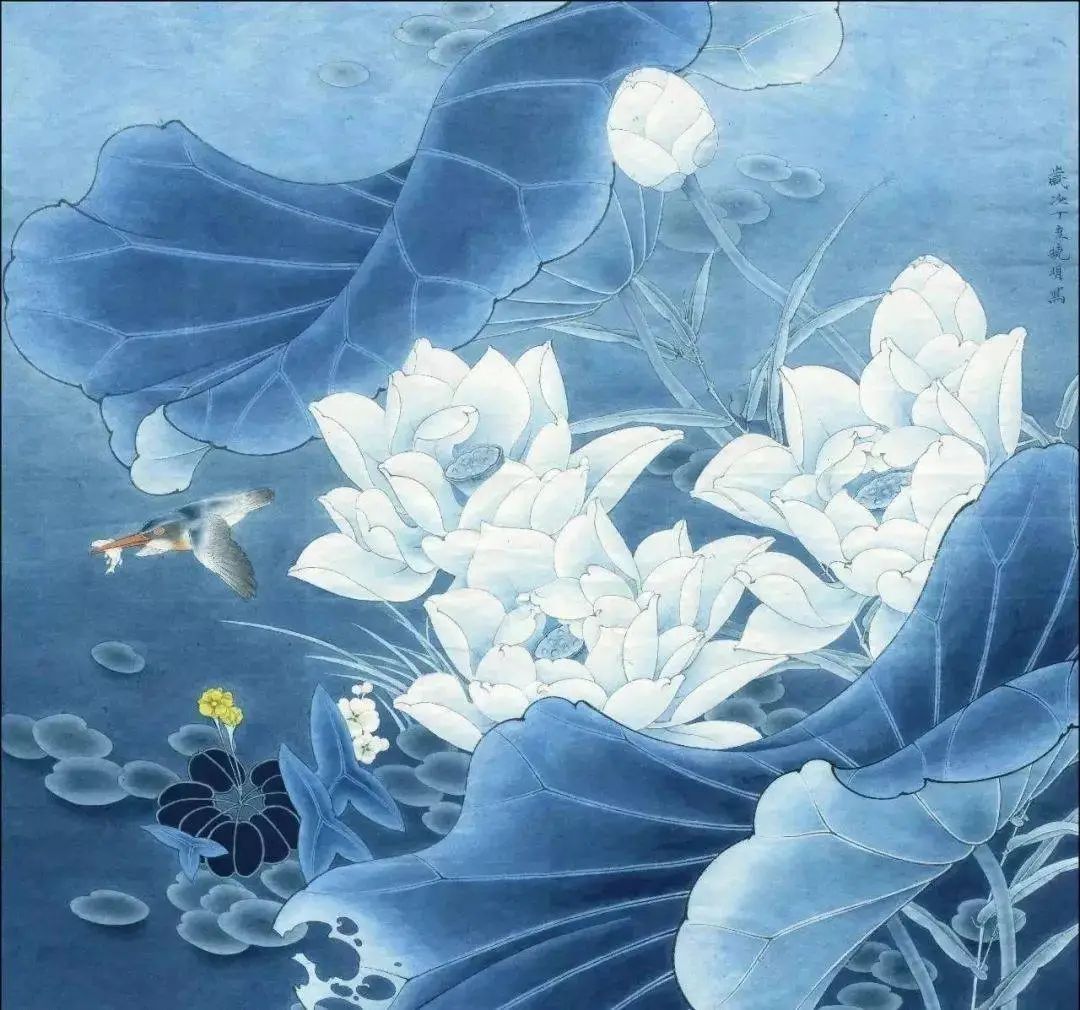
4、The lotus flower heads are dyed with white powder to shine brightly. Lotus leaves are dyed with a mixture of head green and a small amount of phthalocyanine blue to highlight. Use thin five green (three green+white) to dye and brighten the leaves. Then use ink blue to dye the front of the lotus leaf, including some prominent water lines that need to be changed. Anti leaf can be dyed with whole anthocyanins.
Finally, add a large amount of water to the dark blue color (floral blue+ink) and blend it into a dark blue water color to enhance the overall color and coordinate the image. The key to this step is to create the atmosphere of the picture, so the pen should be bold and the areas that should be covered up (such as the mushroom flower head) should be boldly dyed in. For some distances, you can consider using a nylon wire paint brush or oil painting pen dipped in water to locally wash and weaken.
Water plants should be painted with ochre color from the tip to the root, and then spread out using a wide dyeing method. Some flower heads that are in the dark and distant areas are dyed white, and then a light blue edge is left with a water line to be dyed back, emphasizing the transparency of the flower head and the overall light dark relationship.
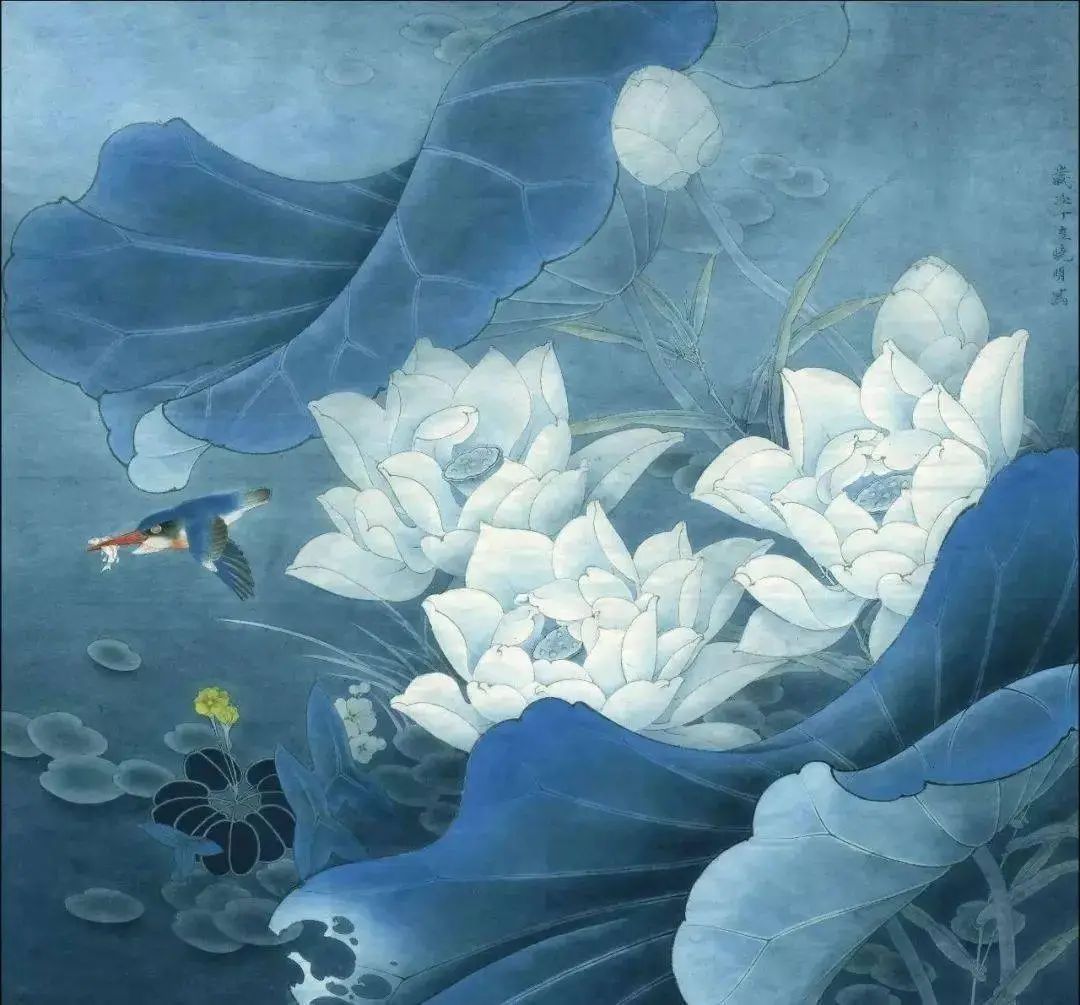
5、The light blue color continues to coordinate and dye the floral head as a whole, without being confined to details. After dyeing the feet, use light eosin to restore the tip of the flower head. The front of the lotus leaf is covered with a layer of light phthalocyanine blue, and the color of the distant view cover is slightly light and gray. After dyeing the lotus pods with indigo, use a light orange yellow (rattan yellow+vermilion) to cover and dye the entire surface bright. Use thick rouge to dot the top of the lotus seeds with dots.
Then dot the stamen with concentrated pink yellow (rattan yellow+white), dot the stamen tip with concentrated white powder, and hook the silk thread with white powder. The anti leaf edge is dyed with a very light reddish yellow color. The eroded part of the main leaf is stained with reddish brown ink, with the pen indicating the top. The thorns on the ink dot loading rod feel steady when the sharp edge enters the paper. Use concentrated yellow powder to dot the stamens of water lily and mushroom flower heads. Apply light three green to the stem of water lily and then use light rouge to knead it.
Finally, rinse the background and distant view with a clean water pen again, adjust the overall picture to a satisfactory virtual and real state, and complete this image.
